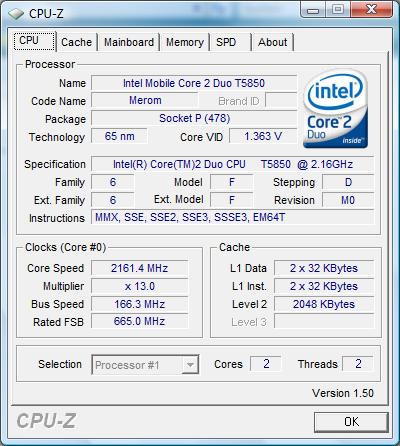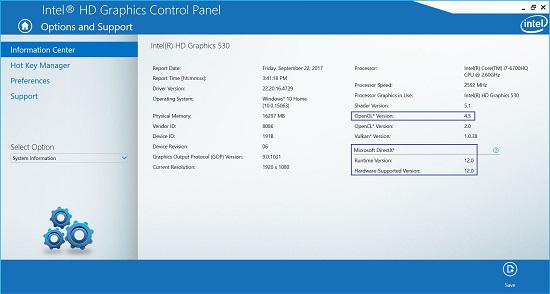After noticing lackluster running games on my Macbook, I did some research on the Intel GMA X3100 and have read reports that the Windows versions of the driver are more up to date and perform better than the OSX drivers. Intel GMA x3100. Discussion in '. Seems anyone who has a macbook would know this about the intel intergrated gpu. IPad, and Mac platforms. Advertise on MacRumors.
White & Black MacBook Q&A - Revised March 1, 2008
To be notified of new Q&As, sign up for EveryMac.com's bimonthly email list.
If you find this page useful, please Bookmark & Share it. Thank you.
How much faster is the Intel GMA X3100 graphics processor in later MacBook models compared to the Intel GMA 950 in earlier models? Is gaming performance improved?
Please note that the Intel GMA X3100 graphics processor was introduced with the 'Late 2007 Santa Rosa' MacBook models, but this answer is applicable to subsequent MacBook systems that use the GMA X3100 as well. Also see: How much faster is the NVIDIA GeForce 9400M graphics processor in the 'Unibody' MacBook models compared to the Intel GMA X3100 and GMA 950 in earlier models?
For the Intel GMA 950 'integrated graphics' processor that Apple used in previous MacBook models -- as well as the Mac mini and some iMac systems -- Apple bragged that:
The Intel GMA 950 graphics supports Tiger Core Graphics and the latest 3D games. It shares fast 667 MHz memory with the Intel Core processor, for an incredible value proposition.
Unsurprisingly, given the lackluster performance of the GMA 950, various reviewers attacked the 'latest 3D games' marketing copy as a tad optimistic.
For the 'Late 2007 Santa Rosa' MacBook systems, Apple was far more modest -- not even issuing a press release and only mentioning the GMA X3100 graphics processor in the specifications without promoting it at all, even though it is superior to the GMA 950. Additionally, albeit buried in technical documents, Apple goes as far as candidly stating that 'software with intensive 3D graphics requirements may exhibit performance limitations'.
In an in-depth review, the always excellent ArsTechnica compared a MacBook 'Core 2 Duo' 2.2 13' (Black - Santa Rosa) to recent iMac and MacBook Pro models equipped with 2.4 GHz Core 2 Duo processors in a battery of synthetic benchmark and application tests.
Although the complete details should be evaluated in their entirety -- and the difference in overall performance was more modest -- the graphics performance of the X3100 paled in comparison to the more expensive 'dedicated' graphics in the other systems. In synthetic benchmarks, ArsTechnica noted:
Where the MacBook really got spanked was when it came to the OpenGL tests. As with the Xbench tests, the integrated X3100 graphics performed very poorly compared to the discrete NVIDIA and ATI cards in the other two machines.
In real-world tests, the results were similar:
Most of the MacBook's PSBench scores lagged by between five and ten percent, but in the OpenGL test they're around 20 to 30 percent behind.
For gaming in particular, the always dependable MacWorldfound that:
Gaming scores improved with the new models, reflecting their updated graphics chips. Unreal Tournament 2004 frame rates jumped from 18.5 fps for the 2.16 GHz white model to 25.4 fps for the 2.2 GHz black model. For Quake 4 test, frame rates nearly doubled from 4.5 fps to 7.8 fps in comparing those same same models. Hard core gamers will still want to steer clear of the MacBook line, but if you play games only occasionally or you tend to play games that are only moderately graphics-processor-intensive, you'll definitely benefit from the MacBooks' new graphics chip.

The continuously superb BareFeats has provided in-depth test results for graphics applications, high-resolution, and low-resolution gaming on the MacBook, all of which should be read completely. For low-resolution gaming, the site discovered that 'some games actually are playable' but for high-resolution gaming and serious graphics applications:
Not only is the new MacBook with the GMA X3100 a bummer for high rez gamers, it's going to disappoint pro users when running serious graphics intensive apps. On the other hand, if you are running purely CPU intensive tasks (Compressor, Photoshop, After Effects), the new MacBook should compare very well with similarly clocked MacBook Pros.
Ultimately, for those with modest graphics performance needs, the MacBook would be an excellent choice. Those with more demanding needs would be better served by a MacBook Pro.
Intel Gma3100 Driver For Macbook Pro
Permalink | E-mail a Friend | Bookmark & Share | Report an Error/Typo
Suggest a New Q&A | Sign Up for Bimonthly Site Update Notices
<< White & Black MacBook Q&A (Main)
EveryMac.com is provided 'as is' without warranty of any kind whatsoever. EveryMac.com, and the author thereof, shall not be held responsible or liable, under any circumstances, for any damages resulting from the use or inability to use the information within. For complete disclaimer and copyright information please read and understand the Terms of Use and the Privacy Policy before using EveryMac.com. Use of any content or images without expressed permission is not allowed, although links to any page are welcomed and appreciated.
 In the past, Mac OS X didn't support integrated graphics cards, so you couldn't use the integrated graphics on the motherboard of your Hackintosh. However, this changed in 2011, when Apple released the Mac Mini and a new line of Macbooks. Now, with Mac OS X Lion, any Hackintosh with Intel HD 3000 integrated graphics can get full graphics support in a relatively easy process.
In the past, Mac OS X didn't support integrated graphics cards, so you couldn't use the integrated graphics on the motherboard of your Hackintosh. However, this changed in 2011, when Apple released the Mac Mini and a new line of Macbooks. Now, with Mac OS X Lion, any Hackintosh with Intel HD 3000 integrated graphics can get full graphics support in a relatively easy process.Find out if your processor is supported
Mac OS X Lion only supports Intel HD 3000 graphics, which are included in a few of Intel's newest 2nd-generation processors (known as 'Sandy Bridge' processors). Check out this list of Sandy Bridge desktop processors with HD 3000 graphics for more info. (A lot of laptop processors also have HD 3000, but there are too many to list.)
A vast majority of Intel processors still use the older HD 2000 graphics, which don't work with the method in this guide. However, you can enable basic HD 2000 support on Mac OS X with this alternative guide. If you want to find out whether your Intel processor uses HD 2000 or 3000, you can Google the model of your processor. For example, if I search 'Core i5-2500K' (my processor model) on Google, the first result is Intel's official page for the Intel Core i5-2500K. According to the 'Graphics Specifications' section of that page, my Hackintosh's i5-2500K processor uses 'Intel® HD Graphics 3000', which works with Mac OS X.
Additionally, your computer's motherboard has to support integrated graphics. For Intel's 2nd-generation processors, P67 motherboards are the only type of motherboards that don't support integrated graphics; the other three types of motherboards will work.
1. Adjust your BIOS
For starters, you need to change a graphics setting in your computer's BIOS (which is essentially the settings page for your motherboard). Boot your computer, and enter the BIOS. To enter the BIOS on a Gigabyte motherboard, you have to press the delete key when it boots (before the operating system starts). Different manufacturers set different keys for opening the BIOS.
If you have a Gigabyte motherboard, there will be a setting called 'On-Chip Frame Buffer Size', located in the 'Advanced BIOS Features' page. This sets how much video RAM your processor's HD 3000 graphics will use. Motherboards from different brands might call this setting something else.
If your Hackintosh has 4 GB of RAM, set video RAM to 384MB. If your Hackintosh has 8 GB of RAM, set video RAM to 480MB.
Once you've set up the BIOS, proceed to the next step.
2. Update to Mac OS X Lion
If your Hackintosh is still running Mac OS X Snow Leopard, update to Mac OS X Lion. This is worth repeating: Mac OS X Snow Leopard does not support HD 3000 graphics! Check out the following guides to installing Mac OS X Lion if you need help:
- How to update to Mac OS X Lion with Unibeast
- How to update to Mac OS X Lion with Kakewalk
- How to install Mac OS X Lion without installing Snow Leopard
NOTE: HD 3000 is not supported out of the box; after installing Lion, you'll have to make a few modifications before your screen will display at full resolution.
3. Install Chimera bootloader
Once you've installed Mac OS X Lion on your Hackintosh, install Chimera bootloader. Chimera is a popular bootloader for Mac OS X, made by MacMan from tonymacx86. (A bootloader is the program that boots your operating system when your computer starts.) Easybeast and UserDSDT (available in Multibeast) both install Chimera. If you aren't using Easybeast or UserDSDT to enable booting from the hard drive on your Hackintosh, you can also use Multibeast to install Chimera bootloader by itself (the option is located under Drivers & Bootloaders -> Bootloaders in Multibeast).
Intel Gma 3100 Integrated Graphics
NOTE: You have to register an account on tonymacx86 to download Multibeast.

Intel Gma 3100 Windows 10
Chimera bootloader injects the device ID of your HD 3000 graphics card into Lion's default graphics drivers, so that you can get graphics support without a hassle.4. Install the 'Mac mini' system definition
Finally, install the 'Mac mini' system definition in Multibeast. System Definitions pretend that your Hackintosh is a real Mac. When Mac OS X Lion sees that your Hackintosh is a 'Mac mini', which uses HD 3000 graphics, it enables the built-in HD 3000 drivers, which are otherwise turned off. You can also use the 'Macbook Pro 8,1' system definition, though 'Mac mini' is generally recommended.
Ending Notes
Reboot, and Mac OS X Lion should display in full resolution, and have graphics acceleration. However, here's a few things you should keep in mind about HD 3000:
- Dual-monitor setups will work.
- The VGA port on your monitor will not work (real Macs don't have VGA ports). You have to use either the DVI or HDMI port on your monitor to connect it with your computer.
- You may see occasional artifacts on your screen, but this is normal. You may be able to fix these artifacts by installing FakeSMC 4.2.